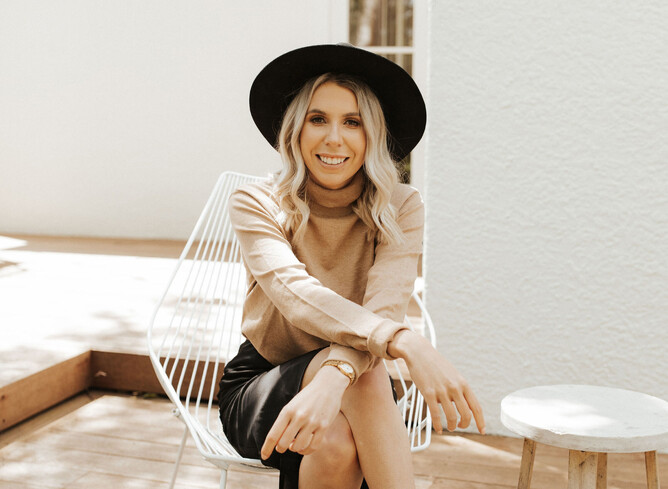When designers transition from employment to freelancing there are a few hurdles to overcome; a massive one is money. We all know that money is still a bit of a taboo topic in New Zealand society, and people aren’t always very forthright with what they earn and how they manage their finances. Unfortunately, that means new solopreneurs can find themselves in the dark regarding how to run the financial side of their business.
A common question many of our new community members ask is what should I be charging clients for their services. Nicole Macdonald is the creative director and founder of January Made Design, which she has been running for over seven years. It took Nicole some time to create a pricing strategy that worked for her and to innately understand the value she brings to clients. Nicole shares some of her techniques with us, so you don’t have to go through the same headaches she did.
Nicole’s first piece of wisdom may sound like an oxymoron, but it is worth its weight in gold. “When I have fewer people inquiring about my work, they are usually the right type of people and that is where the price point is perfect,” she says. Essentially, she has found that when her price is too low, her inbox is inundated with inquiries - however, quantity is not always better than quality for a freelancer. It’s better to have fewer big projects where a client is willing to pay a high fee than multiple low-value jobs that burn you out.
Displaying prices on your website is another piece of advice from Nicole. “I kind of look at myself as a shopper. If I walk into a store and I can't find the price of a dress, I'm probably not going to go up and ask about it because it's out of my price range,” she explains. “I think that's how you avoid tire kickers and you can make sure that they're coming to you with a budget that's going to work for the services that you're providing.” The price should always be seen as a guide, not a definitive rate - as consultation with a client on the scope of the project will determine just how much work will be done.
Assessing the intangible value your services bring to the client beyond just the tangible design services is factored into Nicole’s package rates. For a web design package, she considers the time the design will take and applies her hourly rate to that. However she goes a step further to consider the greater value of the website’s end-use and what that will bring the client, for instance, the leads it will generate for their business, increased sales due to the improved design, the alleviation of tech-related stress, and the time they save. “You can add a monetary figure to that value,” Nicole advises.
So what does Nicole think about price rates versus package rates? Having both is her answer. “I think having a base hourly rate is handy and I know that's quite traditional and probably an older school of thought, but I found that it's just a nice fallback. If anybody presses me I know that I can throw out my base rate,” she explains. However generally, she works to package rates, for instance, her advertised rate for signature branding begins at NZD 3500 and NZD 5500 for website design.
Factoring all the “boring stuff” is also critical. Don’t forget to consider your ACC bill, GST, and any other tax obligations or overheads you may have. Once Nicole has calculated her hourly rate with the time needed, the intangible value and the pesky tax numbers she has her rate. From there it’s up to you if you want to stick to your guns or look at competitors' pricing and perhaps lower it a little to secure the deal. Nicole recommends factoring in your clientele at this point. Are they looking for luxury or a cheap deal? Are they a small business or a prestigious company? Considering who your client is can inform how you play the game of pricing.
Which leads us to negotiation. There’s no doubt every designer will come across someone who wants to haggle on your price, but Nicole recommends standing firm. “That's the biggest thing that I can say to any new designer - is that if somebody's haggling over price, that's a really big red flag and it's not going to be worth your time.”
It’s normal to see clients attempt to haggle, but as Nicole has learned sometimes the designer should do, especially if a request is last minute and to a short deadline. You may have heard of rush rates before. “I have rush fees, however, they are very scope-dependent,” she explains. “If I don’t think something can be done in the time they’ve requested I will let them know as I like people to know if they're asking way too much so they don’t establish a general expectation that they can get really beautiful quality design turned around in five minutes.”
Nicole Macdonald
@januarymadedesign








